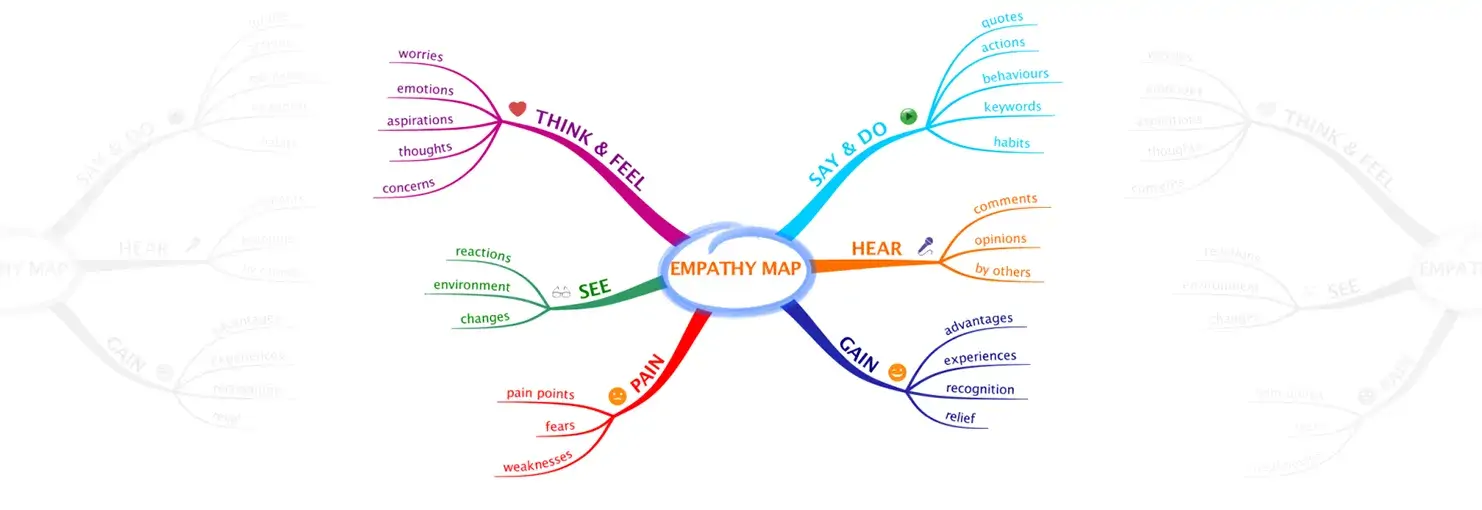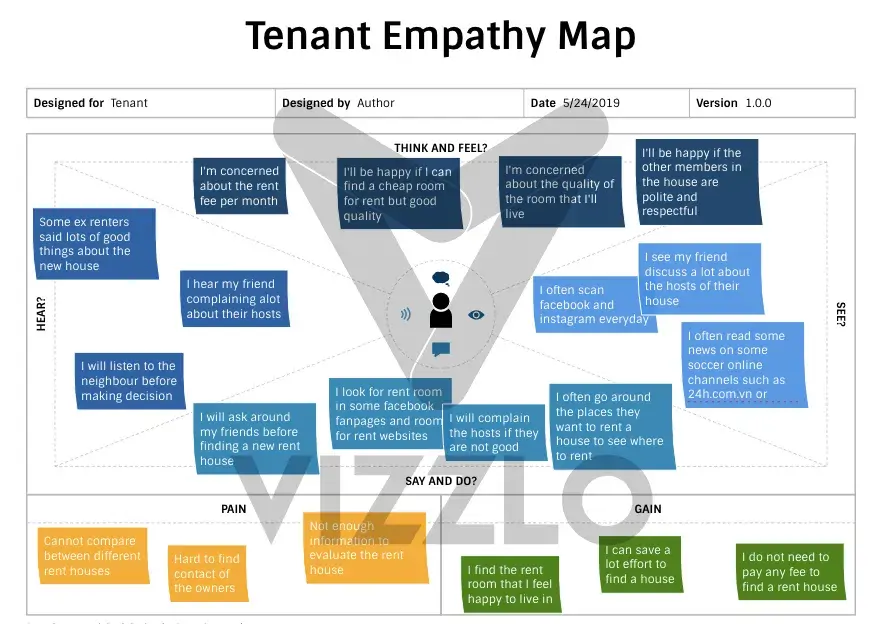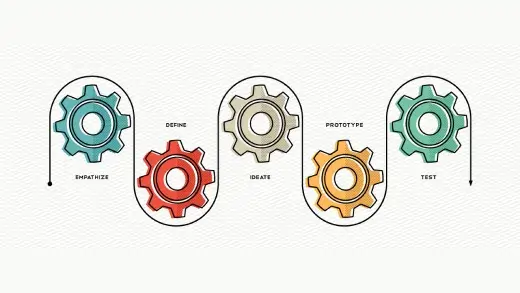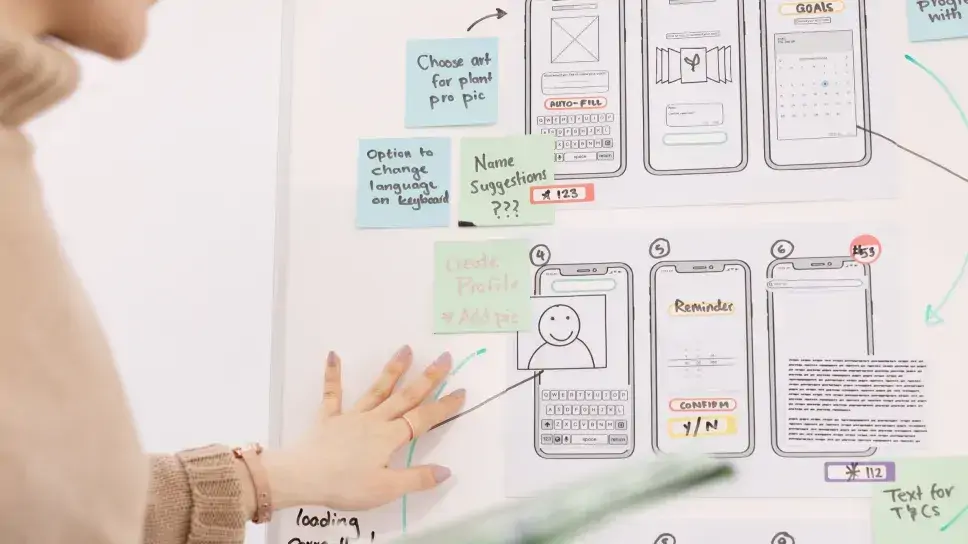EMPATHY MAP

Introduction
Empathy Map is a framework that helps you gain an insight on user, from which to create a better connection between the product and its users. The map goes beyond what users SEE, DO and SAY, what they HEAR, THINK and FEEL, etc. to provide the portrait of target user.

Step 1: Establish Focus and Goals
Who are the specific users you want to design for?
This one is the person you need to understand and empathize, which can be a single person or a user group. The activities consist of analyzing the situation and define their role in that condition.
- Who is the person you want to understand?
- What is the situation they are in?
- What is their role in the situation?
What is the desired outcome?
This stage shows exactly what the user expects to do, for example:
What do they need to do differently?
- What job do they want or need to get done?
- What decision do they need to make?
- How will you know they were successful?
Step 2: Capture the Outside World
What do they SEE?
The SEE quadrant contains what user encounters in daily experiences which could be people, activities or things.
- How does their environment look like?
- What do they watch or read?
- What do they see others doing?
What do they DO and SAY?
The DO and SAY quadrant encloses the actions user takes and says out loud.
- How do they behave?
- What behavior have you observed?
- What are their attitude toward others?
What do they HEAR?
People are often influenced by plenty of things around them, especially what they hear regularly in the form of advices or recommendations. The HEAR aims to clarify how the advices reach them and whose advice matters the most.
- Where do they get these information or through which channels?
- What are they hearing others say and how is it influencing them?
- What do they trust the most?
- Do they listen when others make suggestions?
Step 3: Explore Inside the Mind
What do they THINK and FEEL?
By pointing a look into user's feeling, this section connects them with the product's features.
- What are they concerned about or afraid of?
- What cause an emotional reaction for them?
- What are their dreams or aspiration?
- Are they pleased?
- Why or why not?
What are their pains?
This quadrant is one of the most important sections of the empathy map because it will present the pain points that the products/services need to resolve.
- What obstacles do they need to overcome?
- Why can't they reach the goals?
- What are they frustrated about?
What do they gain?
People will pay off when realizing they can obtain some value, so this stage will measure whether the offered product/service can become a part of their success.
- What approaches do they use to achieve success?
- How do they measure the success and what is it look like?
- What are the short and long term goals?
Conclusion
By synthesizing observations in order to draw out deep insights of end user, the Empathy Map enables UX teams to generate the appropriate design and step-by-step access user life.
"Design is not for philosophy, it's for life" - Issey Miyake

Case study: Tenant Empathy Map



